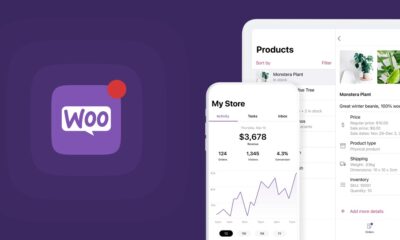Business
A Step-by-Step Guide for Fulfilling Online Orders


Whether you’re starting your first business, just beginning to take online orders, or have owned a business for some time, it’s critical to take a step back and consider how your goods are reaching the customer.
Getting a purchase order from your warehouse to a buyer can be challenging, especially if you do not have the proper infrastructure in place to handle increasing demand. After all, you want to see more orders coming in, but you also want to ensure you have the ability to meet the expectations of your customers, getting orders to the correct place at the correct time. You must first understand what order fulfillment is and how to leverage it to your advantage before you can completely address how to get your clients’ orders delivered promptly.
What Is Order Fulfillment?
Order fulfillment is the process of getting a product to the end consumer, starting with the handling of that product at the time it is ordered and ending with the moment your customer is satisfied with their order. Today, customers are in control more than ever, and their satisfaction means everything. So, ensuring your process is efficient is imperative to the survival of your business.
Even though a successful transaction is usually a cause for celebration, the task isn’t finished until the customer has received their order and is completely satisfied. Order fulfillment includes many steps such as logging new orders, getting those orders together, preparing orders for shipment, and handling any post-purchase issues as well.
How to Fulfill Online Orders


1. Receiving Inventory
Your products are gathered and stored in your storage facility or the fulfillment facility of your logistics partner during the receiving inventory stage. In any event, when receiving inventory, you must be quite precise. You may have to cope with unforeseen events like a stock deficit if manual delivery faults are made during the shipment of the inventory or sloppy counting of the received goods.
2. Quality Control
The process of verifying whether the products are in a sellable condition is known as the quality check. Once you have received the inventory, you must perform quality checks on each product. If you don’t, your customers can get high-quality rejected products. Customers will be forced to return your goods. As a result, you are harming your brand’s reputation. You must set up a process for inspecting the quality of each product you get.
3. Packing
Ordered goods are pulled from the shelves, tagged as “ready-to-dispatch“, and packed during the packing stage. The packer or picker is the person who gathers items from your inventory and boxes them up for shipment. The packers must choose the appropriate shipping cartons for the various order components. For instance, fragile items require bubble wrap or special labels.
Additionally, packers oversee marketing inserts in your shipment, such as coupons or freebies. Any slowness while packing could lead to products being wrongly wrapped or missing out on coupons, samples, and other marketing opportunities.
4. Shipping
When an order is tagged as ready to ship, the storage facility or fulfillment center will pick it up and deliver it to the customer’s door. Delivering goods in acceptable condition to your customers is the responsibility of your courier.
5. Handling Returns
When orders are returned, they are sent back from the customer and delivered to the warehouse or fulfillment center. Any e-commerce company that experiences return faces a significant financial strain. Therefore, having a clear SOP in place for handling returned goods is essential.
How to Streamline Order Fulfillment
Businesses should gradually make changes after implementing the order fulfillment system to increase service responsiveness and accuracy.
Automate Processes
Modern technologies can automate most fulfillment process steps, including:
- Inventory control
- Inventory management
- Return control
Businesses can use software to automate routine processes, reducing labor expenses and human error. Thanks to automatic data entry, managers don’t have to worry about inaccurate counts or calculations.
Utilize Inventory Data
Additionally, inventory software gathers information from every transaction to produce thorough reports. With the help of this data, management may enhance the effectiveness, precision, and timeliness of their order fulfillment plans.
For instance, managers can modify reorder points and the warehouse structure to preserve flexibility with changing client demand, using past inventory data. The order fulfillment process is involved and unique to every firm because it frequently varies based on the inventory type, budget, and available space. Owners must, therefore, carefully examine each operation to decide which techniques best meet their requirements.
Final Thoughts
If you discover that your order fulfillment system might need some improvement, it might be time to start looking at alternative ways to streamline the process. This means re-evaluating processes at every stage, analyzing inventory data, and integrating automation wherever possible.



 General2 months ago
General2 months agoWhat Is Smart Construction? A Beginner’s Guide



 Technology1 month ago
Technology1 month agoHow to Send WooCommerce SMS Notifications for Orders





 Technology1 month ago
Technology1 month ago7 Essential TikTok Metrics to Track for Higher TikTok Views in 2025

 Model4 weeks ago
Model4 weeks agoTiffany Stratton: Biography, Wiki, Age, WWE Career, Net Worth, Before Fame, Boyfriend



 Technology4 weeks ago
Technology4 weeks agoTop 5 Tips for Using File Uploads in Your WooCommerce Store Efficiently

 Technology3 weeks ago
Technology3 weeks agoWhy Airlines Are Using Virtual Reality Services for Pilot Training



 General4 weeks ago
General4 weeks agoThe Hidden Costs of a DUI & How a Lawyer Can Help You Avoid Them





 Technology3 weeks ago
Technology3 weeks agoExploring TikTok AI: My Experience Making a Video With Only Artificial Intelligence




You must be logged in to post a comment Login